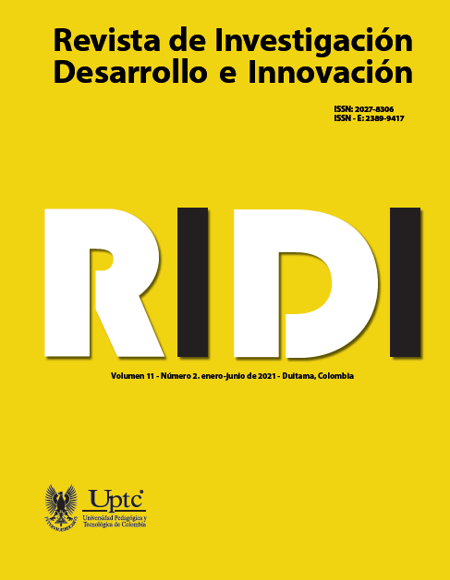Visual pollution in Bogota: analysis of visual load in locations with high advertising stimulation

Abstract
The visual contamination is defined as a perceptual effect composed of disorder and excess of images within the visual field. This study was aimed at establishing visual load levels manifested in 13 urban landscapes of Bogotá City (Colombia). We wanted to establish levels of association between the different variables that contribute to visual load indexes (ViLI), as well as the difference that exists between the visual contamination detected in two different planes of the visual field (one lower and one higher) in relation to the observers´vertical visual horopter. 130 people participated in the study. To define the levels of visual load, the reticulum tracing methodology was implemented on photographs that emulate the arrangement of visual stimuli into the retinal image. It is concluded that the visual load is greater when the objects are at the level or below 15 ° in the visual field. Although visual stimuli that are above 15° provide visual load, they imply a significantly lower index of visual contamination.
Keywords
visual pollution;, visual load;, urban environment;, urbanism
Author Biography
Carlos Andrés Arango
Profesional en Publicidad, Magíster en Publicidad
Guillermo Rodríguez-Martínez
Profesional en Publicidad, Doctor en Psicología
Fernando Marroquín-Ciendúa
Publicista, Doctor en Psicología
References
Alemán, Y. A. (2013). Causas y efectos de la contaminación visual en la arquitectura y la imagen de la ciudad de Arequipa. Editorial 7 Área de Ciencias Sociales, 14, 19.
Aydin, C., & Nisanci R. (2008). Environmental harmony and evaluation of advertisement billboards with digital photogrammetry technique and GIS capabilities: a case study in the City of Ankara. Sensors 8 (5), 3271-3286.
Bechtel, R. B., Marans, R. W., & Michelson, W. E. (1987). Methods in environmental and behavioral research. Van Nostrand Reinhold Co.
Chmielewski, S., Lee, D. J., Tompalski, P., Chmielewski, T. J., & Wężyk, P. (2016). Measuring visual pollution by outdoor advertisements in an urban street using intervisibilty analysis and public surveys. International Journal of Geographical Information Science, 30 (4), 801-818.
Chmielewski, S., Samulowska, M., Lupa, M., Lee, D., & Zagajewski, B. (2018). Citizen science and WebGIS for outdoor advertisement visual pollution assessment. Computers environment and urban systems, 67, 97-109.
Cohen, J. (1992). A power primer. Psychological bulletin, 112 (1), 155.
Cinzano, P., & Falchi, F. (2014). Quantifying light pollution. Journal of Quantitative Spectroscopy and Radiative Transfer, 139, 13-20.
DANE (s.f.). Línea base de indicadores; estrategias para el fortalecimiento estadístico territorial.
Flad, H. K. (1997). Country clutter: visual pollution and the rural roadscape. The ANNALS of the American Academy of Political and Social Science, 553(1), 117-129.
Frank, S., Fürst, C., Koschke, L., Witt, A., & Makeschin, F. (2013). Assessment of landscape aesthetics—Validation of a landscape metrics-based assessment by visual estimation of the scenic beauty. Ecological indicators, 32, 222-231.
Granda, M. E. (2017). La contaminación visual producida por la publicidad exterior. J. Herrero, & C. Mateos (Eds), Del verbo al bit 1354-1369. La Laguna, Tenerife: Sociedad Latina de Comunicación Social.
Ha, L., & Litman, B. R. (1997). Does advertising clutter have diminishing and negative returns?. Journal of Advertising, 26 (1), 31- 42.
Holmqvist, K., Nyström, M., Andersson, R., Dewhurst, R., Jarodzka, H., & van de Weijer, J. (2011). Eye Tracking. A comprehensive guide to methods and measures. Oxford: Oxford University Press.
Isaacs, R. (2000). The Urban Picturesque: An Aesthetic Experience of Urban Pedestrian Places. Journal of Urban Design, 5 (2), 145–180.
Iveson, K. (2012). Branded cities: outdoor advertising, urban governance, and the outdoor media landscape. Antipode, 44 (1), 151-174.
Kamičaitytė-Virbašienė, J., Godienė, G., & Kavoliūnas, G. (2015). Methodology of visual pollution assessment for natural landscapes. Journal of Sustainable Architecture and Civil Engineering, 13 (4), 83-91.
Lakshminarayanan, V., Rajaram, V., Joseph, S., & Beatty, J. A. (2002). Empirical Longitudinal Horopter With Induced Optical Displacment. Investigative Ophthalmology & Visual Science, 43 (13), 4715-4715.
Lavie, N., Beck, D. M., & Konstantinou, N. (2014). Blinded by the load: attention, awareness and the role of perceptual load. Philosophical Transactions of the Royal Society B: Biological Sciences, 369 (1641), 1-10.
Lopez, C., Bachofner, C., Mercier, M., & Blanke, O. (2009). Gravity and observer's body orientation influence the visual perception of human body postures. Journal of vision, 9 (5), 1-14.
Lipshits, M., McIntyre, J., Zaoui, M., Gurfinkel, V., & Berthoz, A. (2001). Does gravity play an essential role in the asymmetrical visual perception of vertical and horizontal line length?. Acta Astronautica, 49, 123-130.
López, F. J. (2012). La contaminación visual o perceptiva en el patrimonio histórico. Una breve aproximación para el caso de Osuna. Cuadernos de los amigos de los museos de Osuna, (14), 98-102.
Macdonald, J. S., & Lavie, N. (2011). Visual perceptual load induces inattentional deafness. Attention, Perception, & Psychophysics, 73 (6), 1780-1789.
Milam, D., El-Nasr, M. S., Moura, D., & Bartram, L. (2011). Effect of camera and object motion on visual load in 3d games. In J.C. Anacleto, S. Fels, N. Graham, B. Kapralos, M. Saif El-Nasr, & K. Stanley (Eds), Entertainment Computing – ICEC 2011. ICEC 2011. Lecture Notes in Computer Science, 6972 113-123. Springer, Berlin: Heidelberg.
Molloy, K., Griffiths, T. D., Chait, M., & Lavie, N. (2015). Inattentional deafness: visual load leads to time-specific suppression of auditory evoked responses. Journal of Neuroscience, 35(49), 16046-16054.
Olivares, F. (2009). “Cidade limpa” y la contaminación publicitaria en la ciudad. Zer: Revista de estudios de comunicación, 14 (26), 253-275.
Oreg, S., & Katz-Gerro, T. (2006). Predicting Proenvironmental Behavior CrossNationally: Values, the Theory of Planned Behavior, and Value-Belief-Norm Theory. Environment and Behavior, 38 (4), 462–483.
Rosa, P. J., Esteves, F. & Arriaga, P. (2014). Effects of fear-relevant stimuli on attention: integrating gaze data with subliminal exposure. Proceedings of IEEE International Symposium on Medical Measurements and Applications, 1, 1-6.
The perception of depth. (Julio, 2011). Recuperado de: http://retina.umh.es/Webvision/KallDepth.html
